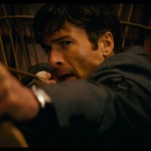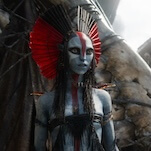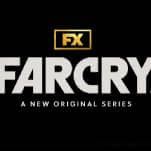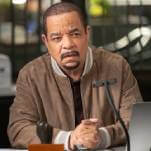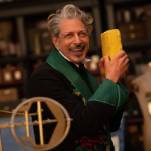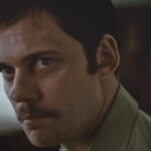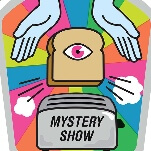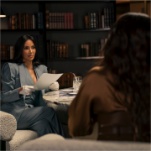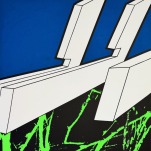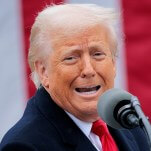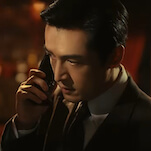In its first two episodes, I Am The Night had clear, classic L.A. noir antecedents: a lot of James Ellroy, a bit of Walter Mosley, and a healthy dollop of Raymond Chandler. But this week’s episode “Dark Flower” begins to drift toward… David Lynch, maybe? Or Stanley Kubrick? The freakier side of True Detective? Gang, what even is this show?
Like those earlier episodes, “Dark Flower” is a mess, but an entertaining one. Week by week, it’s becoming clearer what drew the core creative team of Chris Pine, Patty Jenkins, and Sam Sheridan to this project—and it wasn’t the chance to adapt Fauna Hodel’s heartfelt book about growing up with a confused racial identity. At its core, this is a movie about the sick soul of Los Angeles in the mid 20th century: the sick, sexy, psychedelic soul.
In this latest chapter, we go deeper into the life and times of George Hodel, the philosopher-abortionist and orgy enthusiast. In the episode’s strangest scene, George critiques his lackey Sepp (Dylan Smith), who in some dark studio space has combined a female mannequin with a cello, in what looks to be an artist’s rendering of what could be done to an actual woman. (Do some drilling into the skull, cut a hole or two in the torso, add some strings and voila!) Sepp presents this model to George to prove that there’s “so much more I can do for you… your real work , your secret work.” Hodel responds with an oblique rebuke, calling back to “where I found you, rotting in insipid banality,” before snarling, “Do not dare my height, Icarus.”
Earlier, in a flashback scene to the girlhood of young Tamar Hodel—before she got pregnant with Fauna and was disappeared into a convent—we see the child sneaking around her daddy’s mansion, during one of his weird sex parties. There are masked ladies striding about in their satin underclothes; and some seemingly non-consensual business involving blades and abductions. At one point we see George in an oversized deer mask, sitting ominously at the center of the debauchery. When he spots Tamar peeking in on the sordid scene, he smiles and asks, “Are you dreaming again?”
All of the erotic occultism in “Dark Flower” distracts a bit from what should’ve been the most significant moment in the series so far: the first official meeting between Jay Singletary and Fauna Hodel. Although she initially runs from Jay—primarily because she’s spent the previous day or two being tailed by the creepy Sepp—Fauna eventually agrees to have coffee and pie at Chili John’s, and to give him some very basic info about who she is. The meeting doesn’t get either of them much closer to the truths they’re seeking. Instead, it mostly gives Jay a chance to be all poetically distant, asking Fauna, “Would you date a ghost? … a sad ghost who can’t scare anyone anymore because he’s lost his joie de vivre, his zest?” (I can’t tell sometimes whether the dialogue on this show is awful or magnificent.)
Jay gets a lot more out of his unplanned meeting with some rough-and-tumble LAPD plainclothes goons, sent by Corinna Hodel to persuade him, by force, to cease reopening the George Hodel case. In an exciting and violent sequence, Det. Billis (played by Yul Vasquez, a veteran character actor perhaps best known right now for playing Nadia’s married ex-boyfriend in Russian Doll) mocks Jay’s military service, and threatens to poke his eye out with a pencil.
Singletary’s peepers are spared thanks to his old Korean War buddy Det. Ohls, who arrives at the last second and shuts the torture down, while giving Billis a little speech about how Jay once saved his life by killing seven or eight enemy soldiers with “just a little shitty shovel.” Ohls gets his friend sprung from the interrogation room, even though Billis is “more connected than Ma Bell.” Ohls warns Jay that he’s just used up his last favor in the department. (“They’re gonna put me on animal control in Santa Ana ’til I quit or eat my gun.”)
As far as Jay’s concerned though, the Billis harassment “showed their hand.” He excitedly runs to his boss Peter Sullivan, who sarcastically greets him with, “I can tell from your excitement you cracked open the Bloody Romeo case to nationwide acclaim.” For some reason—okay, for obvious reasons—Sullivan isn’t impressed when his shell-shocked, coke-addicted, “sleaze team” reporter’s insists that the cops shoved him off the George Hodel trail because he was heading in the right direction.
When Jay gets reminded—yet again—that he’s supposed to be writing a story about Bloody Romeo, not George Hodel, he briefly gets so despondent that he drops by a U.S. Marine Corps recruitment center, volunteering to reenlist for Vietnam. (“I can fight,” he says, almost desperately. “I can help.”) When the 18-year-old manning the desk says Singletary’s probably too old, Jay finds his way to a bookstore, where his attention is grabbed by a scandal-sheet special issue, dedicated to the Black Dahlia murder. One way or another, Jay Singletary is going to jump back into the fray.
The big question this episode asks though—in this show’s typically bizarre and often clunky way—is whether the Dahlia/Hodel path is leading Jay into some actual supernatural danger. During Fauna’s own investigations, she finds what looks to be the house where her mother Tamar has been hiding out, and on the wall she sees the same weird deer mask that George wears in this week’s opening montage. At the end of the episode, George himself gets down on his hands and knees and peers under a door, where he hears snarls, and sees hooves.
It looks like I Am The Night is ultimately going to be about more than just run-of-the-mill violent L.A. orgies. There may be literal demons, skulking about. “The full light may blind you,” George Hodel warns Sepp, during their fraught rendezvous. But we’re halfway through this miniseries now, and things just keep getting shadier.
Stray observations
- As I mentioned back in my review of the first I Am The Night episode, I’ve been reading the real Fauna Hodel’s book, One Day She’ll Darken. I’m about a third of the way through it, and it’s a curious tome: a memoir of an unusual early life, written in third person, with no obvious indication that Hodel’s telling a story about her own experiences and memories. The book does get better as it goes, once it moves out of the infancy and preschool years and gets to the incidents with Hodel’s adoptive family and classmates in Nevada that she’s more likely to recall. The details about how she was shunned back then by whites and blacks alike—and, more importantly how she reacted to their dismissals—bring a lot more dimension to Fauna Hodel as a “character” than the show has, so far. From a business perspective, and perhaps even from a narrative perspective, it probably made sense to rush the TV version of this story ahead to Los Angeles, where the real action is. But that choice has come at the expense of a deeper understanding of Fauna’s past and motivations.
- Until this week, I was having trouble getting a clear read on when exactly this miniseries takes place. The first episode read to me as the mid-to-late 1950s; but in this episode, one of Fauna’s relatives talks about having a crush on Mick Jagger. And in the book, Hodel writes about seeing the 1959 movie version of Imitation Of Life as an adolescent. Plus, there’s Jay’s whole attempted Vietnam enlistment thing. All of this would position the time period here as the mid-‘60s… which makes me wonder when the Sunset Strip proto-hippies will show up.
- One thing I love about L.A. mystery stories are the cultural specifics: from the reminder that Los Angeles is basically a showbiz “company town,” to the moments when characters enjoy some of the local cuisine. Like Chili John’s! Not only is this a real restaurant in Burbank (with the real slogan “Take Some Home”), but the whole concept of the “chili parlor” as an earthy L.A. hangout is something of a noir/pulp tradition, common to everything from Columbo episodes to Michael Connelly novels.

























